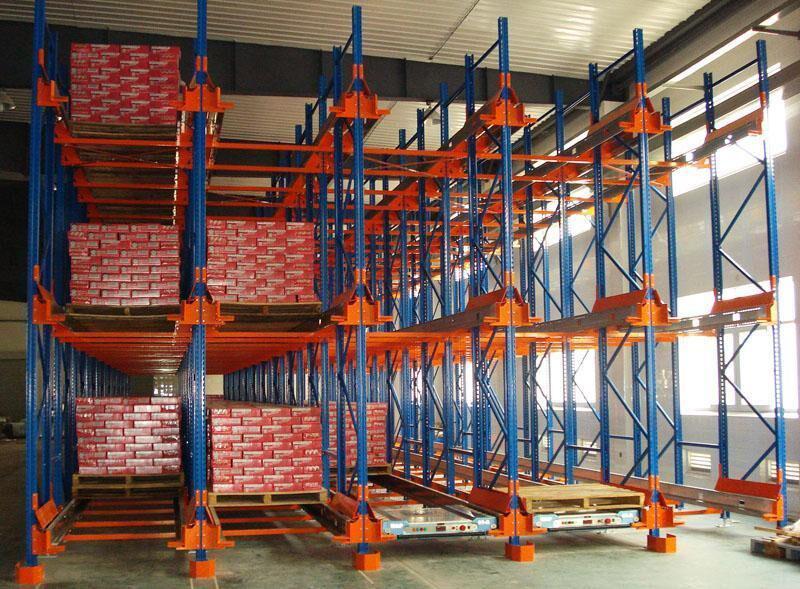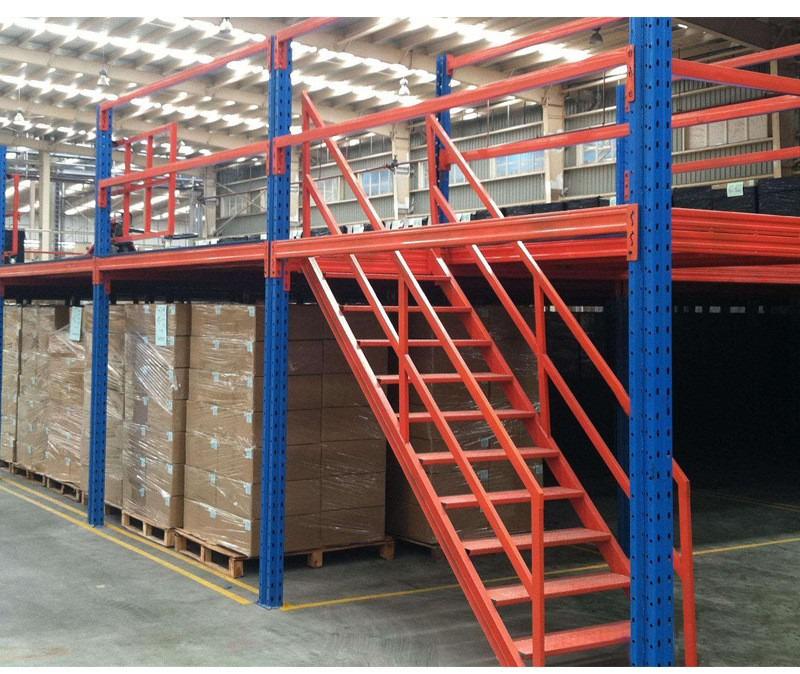In the relentless pursuit of warehouse optimization, space is prime real estate and operational efficiency is king. For businesses storing large quantities of similar SKUs with high turnover, particularly those requiring First-In, First-Out (FIFO) inventory management, drive through racks emerge as a powerhouse solution. This high-density storage system offers significant advantages over traditional selective pallet racking. Let's delve into seven key reasons why drive through racks might be the transformative solution your operation needs.

1. Unparalleled Storage Density: Squeezing More into Existing Footprints
The defining characteristic of drive through racks is their ability to dramatically increase storage density. Unlike selective racking, which requires an aisle for every single row of pallets, drive through racks function like a tunnel. Forklifts drive directly into the rack structure itself to deposit or retrieve pallets.
How it Works: Pallets are stored on rails or beams running the entire depth of the rack lane, typically accommodating multiple pallets deep (e.g., 2, 3, 5, 10 pallets deep or more). Access is only possible from the front and rear ends of the lane. There are no aisles between storage lanes within the same row.
Density Impact: By eliminating numerous aisles, drive through racks can easily double or even triple the number of pallet positions within the same warehouse floor space compared to selective racking. This is particularly valuable in facilities where expansion is impossible or prohibitively expensive, or where land/rental costs are high.
Best Fit: This density is ideal for homogeneous product storage – large quantities of the same SKU or SKUs with identical dimensions and weights.
2. Ideal for FIFO Inventory Management: Ensuring Product Rotation
Drive through racks are inherently designed for FIFO inventory flow, making them perfect for products with expiration dates, batch codes, or those prone to obsolescence.
Natural Flow: Pallets are loaded from one end (typically the "loading" or "back" end) and retrieved from the opposite end (the "unloading" or "front" end). As new pallets are added to the rear, older pallets are pushed forward towards the unloading position.
Eliminating Obsolescence: This systematic flow ensures the oldest stock is always accessed first, minimizing the risk of spoilage, expiration, or holding onto outdated inventory. It provides a clear, physical manifestation of the FIFO principle.
Critical Applications: This makes drive through racks indispensable in industries like food and beverage, pharmaceuticals, chemicals, and any sector dealing with perishables or products with strict shelf-life requirements.
3. Enhanced Space Utilization: Optimizing Every Cubic Foot
Beyond just increasing pallet count, drive through racks optimize the entire cubic volume of the warehouse more effectively.
Vertical Stacking: Like other pallet racking systems, drive through racks can be built multiple levels high, fully utilizing the clear height of the building. The high-density nature at ground level extends vertically.
Aisle Reduction: The most significant space saving comes from drastically reducing the number of aisles. A single aisle serves an entire deep storage lane, whereas selective racking requires an aisle for every single pallet position across the width.
Reduced Honeycombing: Honeycombing (wasted space due to partially empty lanes) is minimized because each lane is dedicated to a specific SKU and filled deeply. Empty slots within a lane still utilize the aisle space overhead, unlike selective racking where every empty slot wastes adjacent aisle space.
4. Operational Efficiency Gains: Streamlining Putaway and Picking
While retrieval of a specific pallet deep within a lane isn't as instantaneous as selective racking, drive through racks offer efficiency gains in specific operational contexts:
Bulk Handling: For operations receiving or shipping large quantities of the same SKU at once, drive through racks are highly efficient. Forklifts can load or unload multiple pallets consecutively from the same lane without needing to traverse multiple aisles.
Dedicated Flow: Setting up specific lanes as "inbound" and others as "outbound" can create a smooth, linear workflow for high-volume SKUs, reducing forklift travel distance and congestion in other parts of the warehouse.
Simplified Management: Managing inventory is often simpler for the products stored in drive through racks, as each lane typically holds only one SKU, and the FIFO flow is automatic. Cycle counting can also be streamlined.

5. Structural Design and Configuration Flexibility
Modern drive through racks are engineered systems offering flexibility to meet diverse needs:
Lane Depth: The number of pallet positions per lane can be customized based on inventory velocity, SKU quantity, and building dimensions. Deeper lanes maximize density but may impact access speed for pallets at the very back.
Height: Systems can be designed to utilize the full available building height, often integrating seamlessly with mezzanines or other storage structures.
Frame and Beam Options: Heavy-duty frames and robust beams are used to handle the dynamic loads as forklifts drive inside the structure. Rails (continuous bar or roll-formed) or heavy-duty beams support the pallets within the lane.
Single vs. Multi-Row: Drive through racks can be installed as single rows accessed from both ends, or back-to-back rows sharing a common central aisle for even greater density. Back-to-back configurations require careful planning for traffic flow and safety.
6. Cost Considerations: Investment vs. Long-Term ROI
Implementing drive through racks involves a specific cost-benefit analysis:
Higher Initial Cost: The structure itself, including the robust frames, continuous rails, and guide rails, is typically more expensive per linear foot than standard selective racking. Safety features like end-of-aisle guards and column protectors add to the cost.
Potential Savings:
Real Estate: The massive space savings can defer or eliminate the need for facility expansion or a new warehouse, representing enormous capital or rental savings.
Operating Costs: Reduced lighting, heating, and cooling requirements in the minimized aisle space contribute to lower ongoing operational expenses.
Inventory Loss Reduction: Effective FIFO management significantly reduces losses due to spoilage or obsolescence.
ROI: The Return on Investment for drive through racks is often compelling but depends heavily on the value of the saved space, the cost of potential inventory loss without FIFO, and the volume of suitable product. The ROI calculation must factor in these long-term savings against the higher upfront cost.
7. Safety and Operational Requirements: Critical Factors for Success
Implementing drive through racks successfully demands careful attention to safety and operational specifics:
Forklift Operator Skill: Operating within the confined space of a drive through rack lane requires highly skilled and trained forklift operators. Precision maneuvering is essential to avoid damaging the rack structure, the product, or causing accidents.
Forklift Requirements: Typically, only counterbalanced forklifts are suitable, and they require specific features like a sideshifting fork carriage and excellent visibility. The mast height must be compatible with the racking height. Specialized guidance systems (like wire or rail guidance) can significantly enhance safety and speed within the lanes.
Rack Protection: Robust column guards, end-of-aisle protectors, and guard rails are absolutely mandatory to protect the structural integrity of the drive through racks from inevitable minor impacts.
Lane Management: Clear procedures are needed to ensure lanes are not entered if another forklift is already inside. Traffic light systems or strict operational protocols are common.
Visibility: Adequate lighting within the lanes is crucial for operator safety. Mirrors at the end of aisles can help with visibility before entering.
Floor Quality: The warehouse floor must be exceptionally level and capable of supporting the concentrated loads of fully laden forklifts operating within the lanes.
Drive through racks represent a strategic storage solution that delivers immense value for specific inventory profiles. Their unparalleled storage density, inherent FIFO capability, and optimized space utilization make them a compelling choice for warehouses burdened by space constraints or managing large volumes of homogeneous, perishable, or batch-controlled goods.
While the initial investment is higher and operational demands (especially regarding forklift operation and safety) are significant, the long-term benefits often provide a strong ROI. Reduced real estate costs, minimized inventory shrinkage from obsolescence, and streamlined bulk handling for high-turnover SKUs are powerful advantages.
Carefully evaluate your inventory characteristics (SKU homogeneity, turnover velocity, FIFO necessity), operational capabilities (forklift fleet and operator skill), and facility constraints (floor condition, height). If the profile fits, implementing drive through racks can unlock substantial warehouse potential, transforming your storage efficiency and boosting your bottom line. They are not a universal solution, but where they fit, they deliver density and flow like few other systems can.







